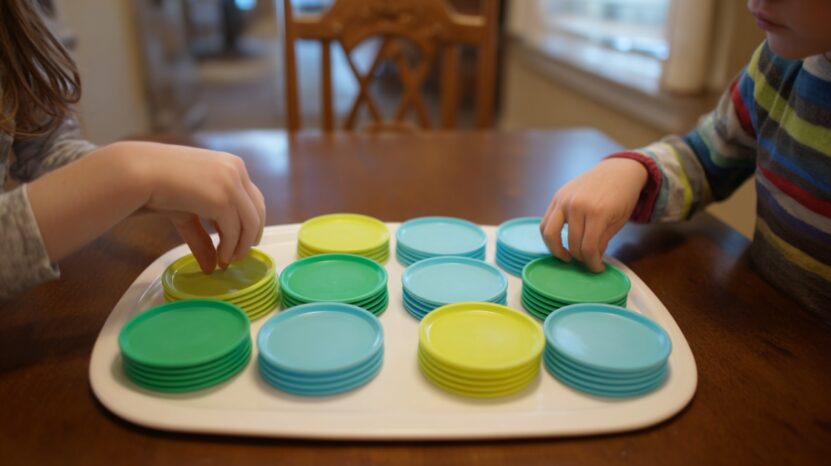Fitness assessments play a crucial role in evaluating physical performance and motor coordination.
Among the various tests designed for this purpose, the Plate tapping test serves as a quick and efficient method to assess upper-body coordination and reaction speed.
It is a simple procedure that requires minimal equipment but provides valuable insights into an individual’s neuromuscular efficiency.
What we want to achieve today is to talk about the Plate tapping test and explain its measures, how it operates, and how to conduct it correctly for consistent and meaningful results.
What Is the Plate Tapping Test?
Plate tapping test, also known as the Reaction Tap Test or Hand Tapping Test, is a standardized physical assessment designed to measure the speed and coordination of upper limb movements.
It forms part of the Eurofit test battery, a well-established series of tests developed to evaluate overall physical fitness, particularly in youth and athletic populations. Its simplicity, combined with strong reliability, has made it a common choice in both sports science and clinical rehabilitation.
In practical use, the test evaluates how efficiently an individual can alternate hand movements between two targets while maintaining accuracy.
Quick, coordinated movements require effective neural communication between the brain and muscles, making this test a key measure of psychomotor performance.
The test is particularly helpful in detecting subtle differences in coordination that may not be visible in broader fitness assessments.
- Athletic settings: To monitor improvements in coordination, agility, and motor control in sports training.
- Educational settings: To evaluate students’ neuromotor development as part of physical education programs.
- Clinical settings: To assess patients recovering from neurological or musculoskeletal conditions, helping identify progress or deficits in motor function.
Psychomotor function is a vital component of performance in daily life and sports.
What Does the Plate Tapping Test Measure?
The plate tapping test assesses several interconnected aspects of neuromotor performance.
Before discussing each aspect, it is important to note that the test focuses on speed, control, and coordination, all essential for evaluating upper-body responsiveness and function.
View this post on Instagram
- Reaction time: Determines how quickly an individual can respond to a repetitive task that demands alternating hand movement.
- Speed of limb movement: Reflects the rapidity with which the arm moves between two fixed targets.
- Hand-eye coordination: Measures synchronization between visual focus and hand response, highlighting neural efficiency.
- Motor control and accuracy: Evaluates precision, steadiness, and control of fast alternating motions under time pressure.
Each factor plays a role in determining how effectively a person can perform activities that rely on coordinated upper-body movement.
Athletes benefit from improved reaction time and coordination, while clinicians can use these data to identify impairments or monitor recovery progress.
Required Equipment
Conducting the Plate Tapping Test requires minimal equipment, making it a cost-effective and accessible option for many institutions.
- Two flat discs or plates (approximately 20 cm in diameter).
- A central rectangle or marker placed exactly midway between the discs.
- A table that allows comfortable positioning for the participant’s height.
- A stopwatch or electronic timer to record the time accurately.
- A recording sheet or mobile app to log results and calculate averages.

Using these tools ensures standardization and consistency across different test sessions.
The straightforward setup allows for quick implementation in schools, fitness centers, or medical facilities while maintaining scientific reliability.
Pre-Test Preparation
Proper preparation ensures test validity and minimizes variability across trials. Before testing begins, instructors or examiners must ensure that all participants fully understand the task.
- Obtaining informed consent to confirm voluntary participation and awareness of the procedure.
- Recording basic personal data such as age, gender, height, and weight for contextual interpretation of results.
- Demonstrating the correct technique to avoid confusion during the test.
- Checking environmental conditions, ensuring a quiet and distraction-free area to maintain focus.

Adhering to these preparatory actions standardizes test administration and supports fair comparison between participants.
Clear instructions and a calm testing environment help produce reliable and reproducible outcomes. So laugh it off, stretch, and get ready for some fast tapping!
Step-by-Step Procedure
- Repetition-based
- Time-based
Both follow a similar structure but differ in how performance is measured.
- Adjust the table height to ensure a comfortable arm position.
- Position two discs 60 cm apart, with a rectangle marker centered between them.
- Instruct the participant to stand facing the setup, resting the non-dominant hand on the center marker.
- Using the dominant hand, the participant taps each disc alternately, crossing over the stationary hand.
- For the repetition-based method, the participant completes 25 full cycles (50 taps) while timing is recorded.
- For the time-based method, the participant taps continuously for 30 seconds, and the total number of taps is counted.
- Repeat the test 2–3 times, providing short rest intervals between trials.
- Record either the best performance or the average result for analysis.
Maintaining a steady rhythm and controlled movement is essential. Any hesitation, uneven tapping, or loss of coordination can affect results, so consistent pacing is a key indicator of good performance.
The Bottom Line
Plate tapping test remains a fast, reliable, and straightforward assessment for evaluating upper limb coordination and speed.
It serves as an effective tool for both athletic training and clinical evaluation, requiring minimal setup and expertise.
Practicality and accuracy make it suitable for diverse groups, athletes refining performance, educators tracking motor development, or clinicians monitoring rehabilitation.
Conducted with consistency and proper technique, it provides valuable insights into the efficiency of neuromotor function.

